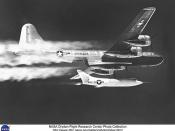Many reactions occur over a number of steps. The slowest of these steps determines the rate of the reaction and is called the "rate determining step".
A. Rate Expression (or Rate Law)
For a given reaction:
aA + bB cC + dD (where a, b, c & d are the stoichiometric
number - for balancing)
Rate = k [A]x [B]y (x & y have nothing to do with a, b, c or d)
(k is called the "rate constant")
{using square brackets around a substance, [A], means the concentration of "A" in mol dm-3}
The rate is always the initial rate and is found by monitoring the concentration of one of the species. If [C] is being monitored, the rate is equal to .
This means we can rewrite the rate expression as:
= k [A]x [B]y
We can only find the values of "x" and "y" by doing experiments.
In these experiments we first measure the rate with certain known concentrations. Then we vary one concentration while keeping the other constant and measure the rate again.
If we double [A] and the rate doesn't change x = 0
If we double [A] and the rate also doubles x = 1 (because 2 = 21)
If we double [A] and the rate increases 4 times x = 2 (because 4 = 22)
We then keep [A] constant while varying the concentration of the other species and use the same logic.
Eg
Experiment [A] [B] Rate
1 0.1 mol dm-3 0.1 mol dm-3 0.02 mol dm-3 s-1
2 0.2 mol dm-3 0.1 mol dm-3 0.04 mol dm-3 s-1
3 0.1 mol dm-3 0.2 mol dm-3 0.08 mol dm-3 s-1
Analysis:
Using Exp 1 & 2, [A] doubles while [B] is constant. The rate also doubles. Therefore x = 1.


